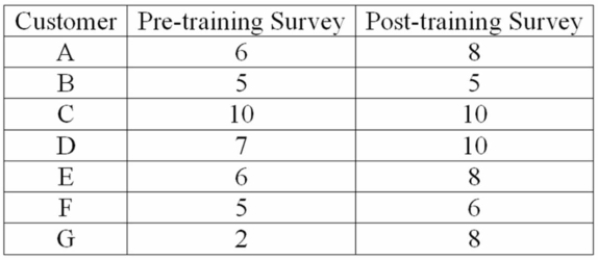Multiple Choice
An investigation of the effectiveness of a training program to improve customer relationships
Included a pre-training and post-training customer survey. To compare the differences, they
Computed (post-training survey score - pre-training survey score) . Seven customers were randomly
Selected and completed both surveys. The results follow: 
Was the training effective in improving customer relationships when tested at a 0.05 level of
Significance?
A) Reject the null hypothesis and conclude that the training was effective.
B) Reject the null hypothesis and conclude that the training was ineffective.
C) Fail to reject the null hypothesis and conclude that mean survey scores are the same.
D) Fail to reject the null hypothesis and conclude that the mean survey scores are not equal.
Correct Answer:

Verified
Correct Answer:
Verified
Q46: Married women are more often than not
Q47: i. If the null hypothesis states that
Q48: For a hypothesis comparing two population means,
Q49: Married women are more often than not
Q50: An investigation of the effectiveness of a
Q52: Of 150 adults who tried a new
Q53: A local retail business wishes to determine
Q54: Married women are more often than not
Q55: Suppose we are testing the difference between
Q56: i. We use the pooled estimate of